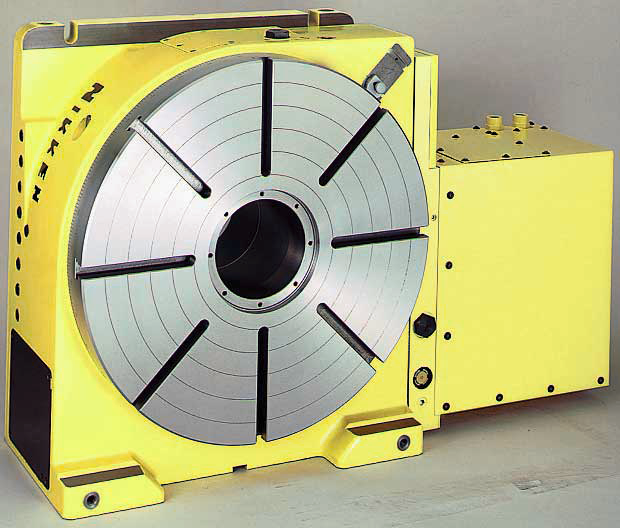Date : January 2009
Source: Cutting Tool Engineering
Challenge: Retrofit a machining center to make it capable of performing work both horizontally and vertically.
Solution: Adapting a rotary table to an existing machining center.
.jpg) Diamond Machine Werks was in a fix. For years, the Arlington Heights, Ill., builder of machines for high-speed assembly applications, had relied on its more than 35 machining centers to handle any project that came its way.
Diamond Machine Werks was in a fix. For years, the Arlington Heights, Ill., builder of machines for high-speed assembly applications, had relied on its more than 35 machining centers to handle any project that came its way.
But in 2007, the pressures of a growing workload revealed a weak link. By the fall of that year, the company had a 3-month backlog of rotary cams (varying in size from 3" dia. to 5" in diameter) and indexing screws (24" long and 3½" in diameter) that needed machining.
According to Dave Kowalski, DMW’s lead CNC man, the problem centered on a 25-year-old Johnford machining center. “We had a machine with an old rotary table that was worn out,” he said. “It wasn’t accurate or fast or powerful enough to push like we needed.”
DMW decided to jettison the Johnford machining center and look into updating its Yasda machine. Kowalski telephoned Steve Reil, vice president McKenna Service Co., Mundelein, Ill., which specializes in CNC machinery repairs.

“DMW’s Yasda horizontal machining center had an indexing-style rotary axis, which means it rotated in 5° increments,” said Reil. “What DMW originally wanted was to put a full-blown rotary table on that machine along with an indexing table, which would have been expensive.
“So we ended up disabling that indexing table and replacing it with a Lyndex-Nikken CNC501 rotary table that we could either stand it up vertically to do cams or lay down to take the place of their indexing table.”
The CNC501 features ion-nitrided worm wheels and carbide worm screws to reduce friction and wear. The worm wheel is made from hardened steel, heat-treated to 36HRC inside with a final 0.10mm-deep ion-nitriding treatment to achieve a hardness of 930HV.
The machine’s other features include:
- Table diameter—500Ømm
- Spindle hole diameter—130H7Ømm
- Center height—310mm
- T-slot width—14mm
- Minimum increment—0.001"
- Net weight—440 kg
- Total reduction ratio –1:120
- Driving torque—576Nm
The retrofit added to the Yasda’s versatility, said Kowalski. “McKenna also upgraded the Yasda’s old Fanuc control with a new GE control that allowed us to adapt the rotary table to do 3-D work.”
Within a month of the retrofit, the growing backlog of cams and indexing screws had disappeared. “With the Lyndex-Nikken CNC501 we’re able to knock out a cam a day,” said Kowalski. “As fast as work comes out from engineering, you can get it on the machine and get it rolling.”
Andy Joerg of DMW, added, “the Lyndex-Nikken CNC501 rotary table paid for itself in 6 months. It increased our capacity and enabled us to have better on-time delivery. We should have purchased it sooner; it was a great addition to our facility.”











